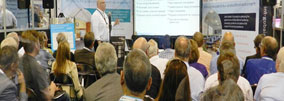It's a wrap - new study on wall wrap & air leakage
New study by CSR’s Building Science team demonstrates wall wrap can significantly improve the energy efficiency of home by reducing air infiltration.
Air infiltration and air leakage has been identified by The Building Science Corporation and the Australian Government as an important issue that needs to be addressed when building a home.
The Australian Government website www.yourhome.gov.au (Chris Reardon 2013) reports “air leaks are year-round issues: in winter, they allow valuable warm air to escape and unwanted external cold air to enter; in summer, the reverse occurs.”
rel="noopener noreferrer" According to the Building Science Corporation website (John Straube 2012) “Stopping air is the second most important job of a building enclosure. Next to rain, air leaks through walls, roofs, and floors can have the most damaging effect on the durability of a house. Uncontrolled airflow through the shell not only carries moisture into framing cavities, causing mould and rot, but it also can account for a huge portion of a home’s energy use and can cause indoor-air-quality problems.”
Testing carried out at the CSR Research Centre in Western Sydney demonstrated that installing wall wrap can reduce air infiltration by up to 82%.
Click here to view slideshow






CSR Building Scientist Jesse Clarke explained, “As part of our research into energy efficiency, we designed an experiment to determine the impact of air infiltration through a typical residential wall”.
For the experiment, a 90mm timber stud wall was built on the face of a pressure chamber. The test wall had two fixed windows, R2.0 Bradford Gold Batts, 10mm Gyprock, timber skirting & architraves, one power point and one light switch. After an initial test with no wall wrap, the wall was wrapped with Bradford Thermoseal Wall Wrap. The same testing procedure was repeated using Bradford Enviroseal with very similar results.
Sensors monitored air pressure inside the chamber, within the stud frame and outside the wall wrap. The pressure measured outside the wall wrap represented a pressure-equalised cavity which is typical in brick veneer and lightweight clad facades.
Clarke says, “Properly installed and well-sealed air barrier wall wraps play a critical role in improving energy efficiency by restricting uncontrolled air leakage. Not only are there benefits to the energy performance, but durability is improved by restricting humid air migrating into walls as well as more effective weatherproofing and drainage of wall systems, even in high wind scenarios.”
Clarke concluded, “Depending on the type of building construction, the air tightness and insulation levels of the building, and its climate zone, the selection of the right wall wrap is critical to ensure the energy efficiency and durability of a home”.




